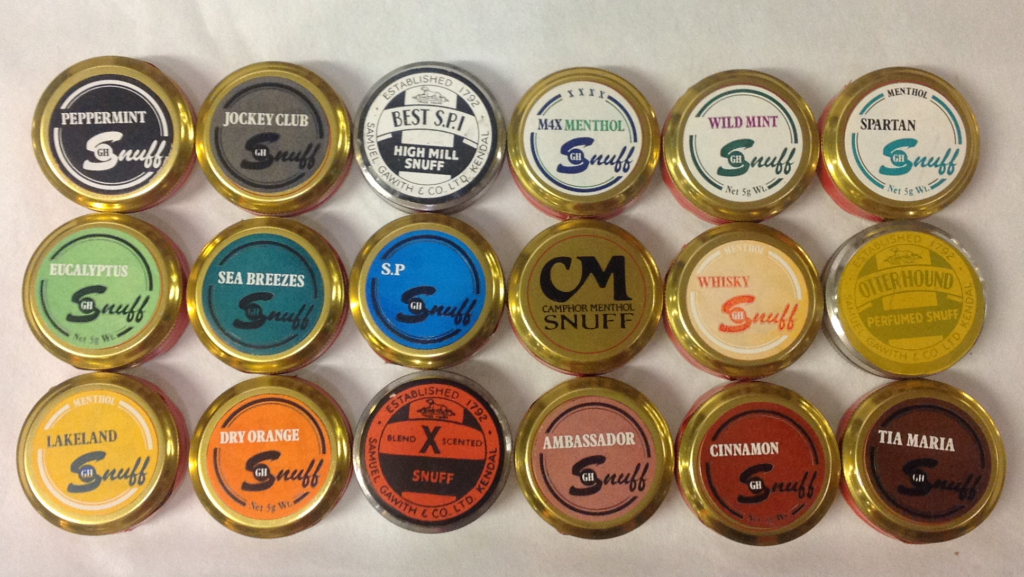This week our curator, Morag Clement, talks about ‘Snuff’.

Snuff collection at Kendal Museum
Snuff is essentially dried tobacco leaves ground into powder which is sniffed into nostrils as an alternative to smoking tobacco. A pinch of snuff is placed on the back of the hand and sniffed, the word “sniff” imitating the sound of the sniffing. This often produces a heavy sneeze which was once thought to be beneficial in cleaning the nasal passages of germs, curing such problems as toothache and colds.
During the plague of 1583 in Kendal, two and a half thousand people died. In the outbreak of 1623 there were far fewer deaths, which was put down to increased taking of snuff to ward off infection. The French hailed it as a cure for all ailments.

Snuff Today
Snuff taking became very popular among those who wanted to experience the pleasure afforded by nicotine without the danger of causing a fire through smoking, particularly by working men and even women in the mills and factories. Snuff was a universal product used first by the gentry, both men and women, but in time by the middle and labouring classes. The actions of taking and offering snuff among gentlemen became an elaborate social ritual. Women of society did not take normally indulge in habit of taking snuff but it is recorded that Patrick Brontë’s wife did so from a very pretty gold box, offering it to other women and shocking them in doing so. Workmen carried their snuff in the tins in which it was bought in, but in 17th to 19th centuries in particular, the gentry carried their snuff in boxes made of precious metals decorated with enamels and intaglios, diamonds or gem stones. They became commonplace and plain in later years when used by ordinary, less rich people. They are now much sought after by collectors who pay very high prices for examples. Although still available, it tends now to be something of a niche or luxury product.
Morag Clement MA(Hons), MPhil, FSAScot
Archaeology Curator
Kendal Museum
Come and explore the Kendal & Westmorland gallery at Kendal Museum and learn more about our exciting local collections.
You can book your tickets here.

